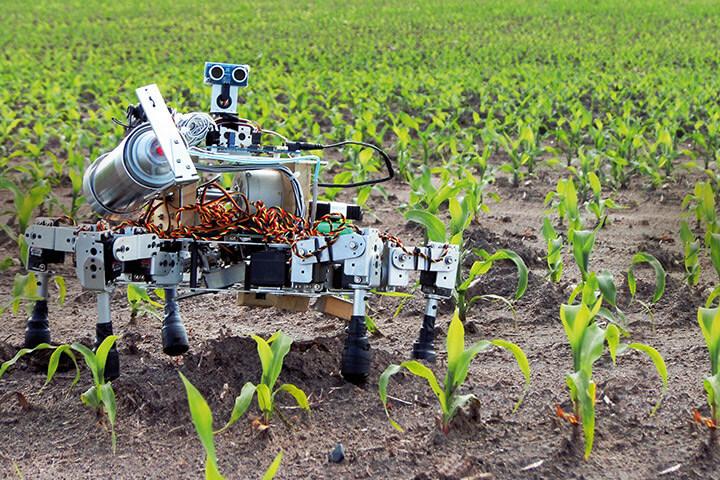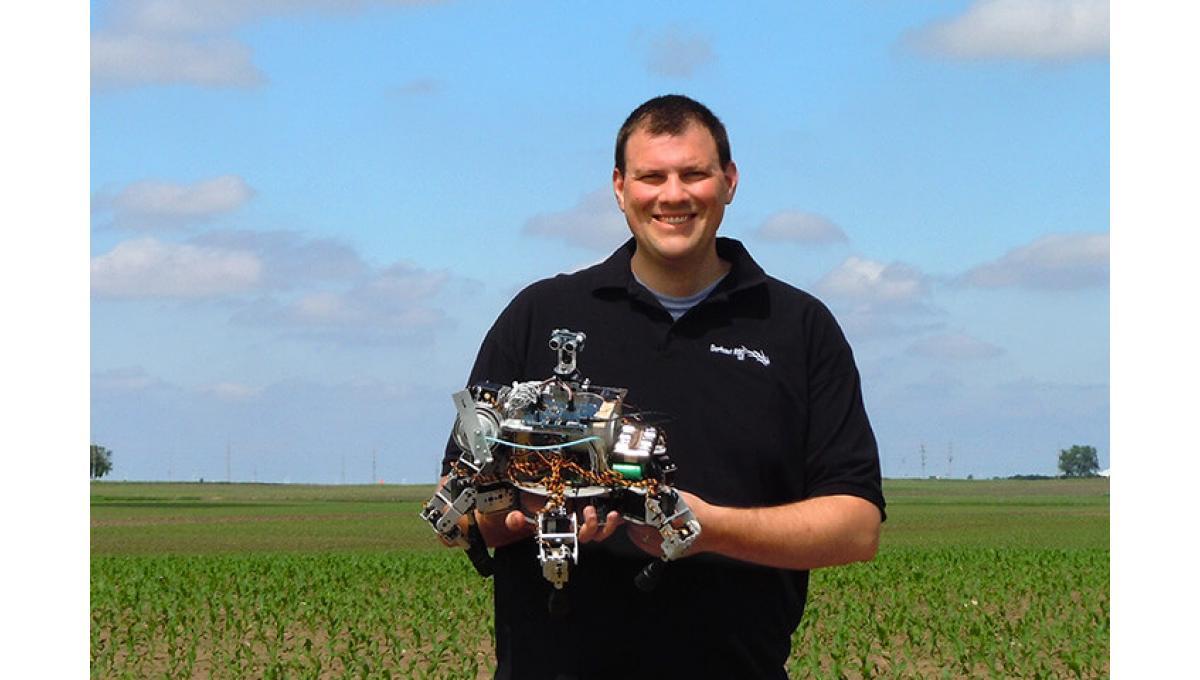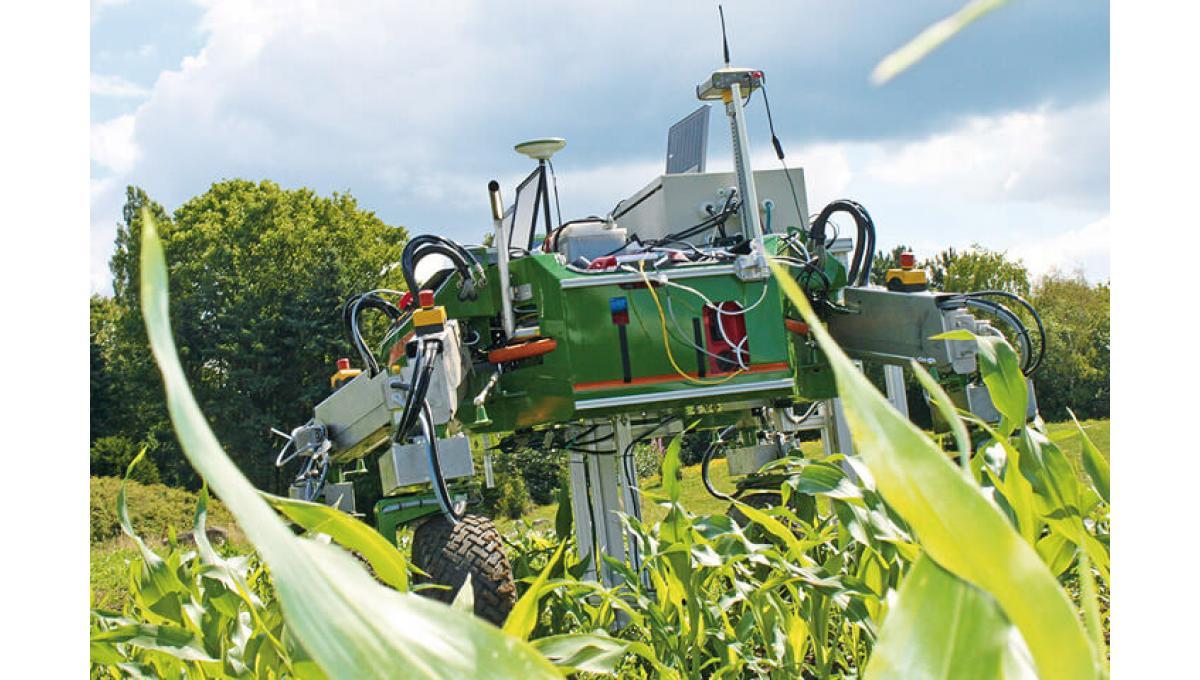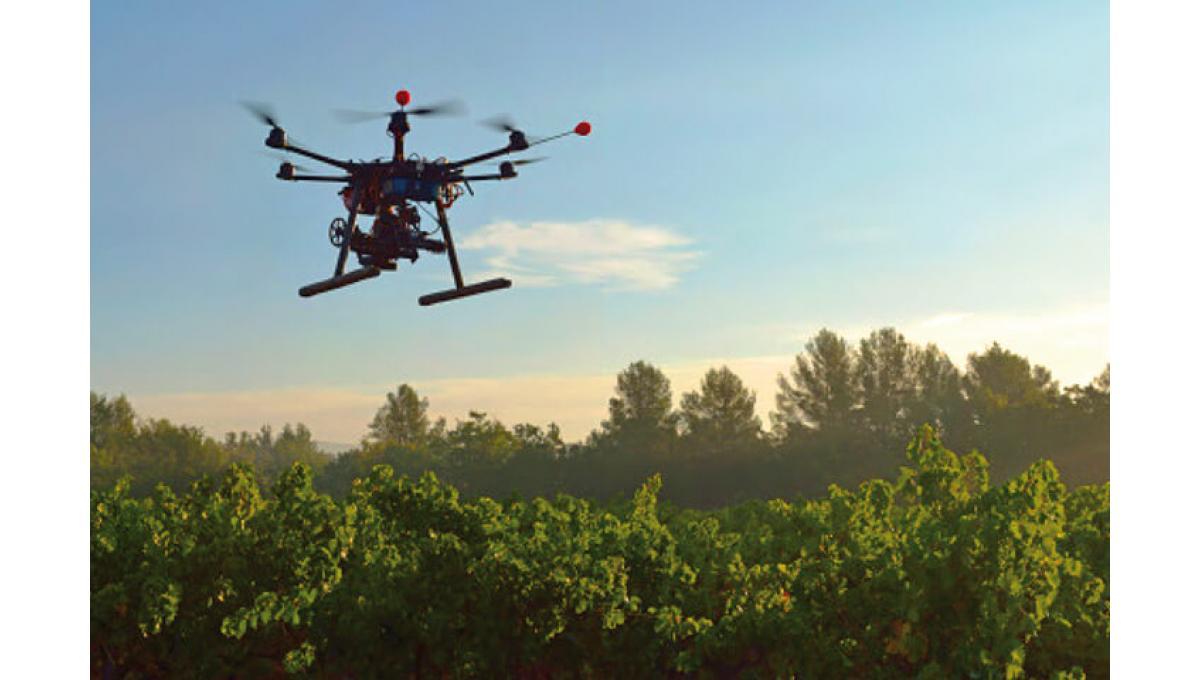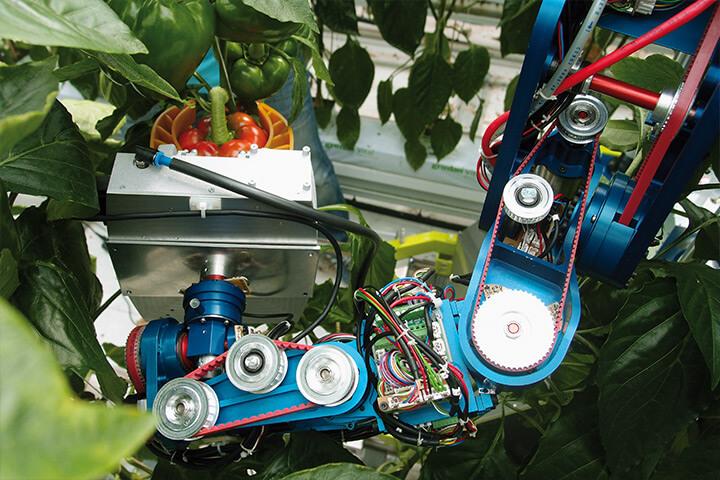Automated Agricultural Helpers: Ripe for Robots
Agriculture must become more efficient: Robots and autonomous supertractors are one important solution.
Crammed with cameras and sensors, the metal crab slowly works its way through the cornfield. By scanning its environment, the little electronic harvest helper cunningly avoids heaps of earth and plant stems. Sowing, fertilizing, planting, bringing out herbicides or picking fruits: Dozens of these intelligent harvesting machines could be capable of working a complete field independently one day. Only the hushed buzz of their servomotors would reveal their nearly silent work.
“Agriculture still offers great potential for automation”, says Peter Dahmen, a member of Crop Science’s research department. And some inventors and engineers like David Dorhout from Des Moines, Iowa, are offering innovative and forward-looking solutions: “Why not take the large machines of today and break them into thousands of smaller machines.” So he invented the six-legged Agrirobot “Prospero”. The autonomous micro-planter is just slightly larger than a basketball and yet it performs wondrous things. Its little aluminum legs easily carry it over every plot surface. If it finds an empty space, it will drill a hole into the ground and place a seed. Next, Prospero marks the spot with a spray and rambles off again.
70%
Food production will have to increase by 70 percent until 2050 to accommodate the worldwide demand.
In Dorhout’s vision, a whole swarm of his little agricrabs tends the field and even communicates among each other. “Similar to ants”, he says. But instead of pheromones, Dorhout’s machines use infrared signals to conduct their colleagues to an unworked area of the field.
“This approach completely frees the farmer from the farm machine and gives him more time for the economic and scientific aspects of his agribusiness”, the inventor explains. The farmer gains more time for seed selection, soil analysis or financial planning. “I’m really interested to see what the farmers of tomorrow will come up with if they are given a tool that tends their fields inch by inch or plant by plant”, Dorhout says.
Raising efficiency
Professor Simon Blackmore agrees: “Precision is the key to efficient agriculture.” He is the director of the newly founded National Centre for Precision Farming (NCPF) in Great Britain. And raising efficiency has become exceedingly necessary: according to the Food and Agriculture Organization (FAO) worldwide food production will have to increase by 70 percent until 2050 to accommodate the worldwide demand. To meet this, manufacturers have already begun working on a vast array of high-performance machines today.
Professor Heinz Ulbrich and his team at the Institute of Applied Mechanics of the Technische Universität München (TUM) are also making an important contribution: Their machine could soon become the next standard in agricultural robotics. With funding from the European Commission, they are developing a modifiable robotic arm. Depending on the requirements, different modules such as sensors, spraying devices or manipulators can be easily swapped. Their partner institute in Wageningen is also working on a sophisticated sensor system: special cameras that generate a three dimensional picture of the robot’s surroundings, helping it to distinguish fruits from leaves. Besides the proofed and tested manipulator, some other special modules are also planned: a sensor for determining the ripeness of grapes with fluorescent light, for example. Then robots could even pluck and preen in vineyards and orchards.
New Technologies and Traditional Machinery
“Robots will have considerable effects on agriculture,” says David Dorhout. Basic concepts such as crop rows might become unnecessary and not a single square inch will remain unobserved. Blackmore dares a prognosis: “In 20 years robotics will have revolutionized agriculture.” He is also certain that new technologies will be employed alongside traditional machinery. “And later robot generations will be intelligent enough to adapt to nature, the weather and other environmental conditions”, Blackmore adds. Crop Science’s technology expert, Peter Dahmen agrees: “We don’t know what the future looks like. But it is quite conceivable that robots will help us to increase the productivity of farming in a more sustainable and environmentally compatible way.”
Farm of the Future
Professor Blackmore, why do we need robots in agriculture?
In the past and up to today, agriculture has been very energy intensive. On the other side, energy has been very cheap and we have used a lot of it to develop agriculture. But energy is going to become more expensive in the future. And the way we are getting pressures from the environment, from legislation and from society, we need to do everything we can to make food production processes as efficient as possible. So what we are seeing now is the advent of smarter machines that only use a minimum amount of energy, thus saving costs and allowing us to devote more efforts to aspects like food quality. We don’t need to have robotics in agriculture, but we do need to make agriculture more efficient. And one way of doing that is to have smarter machines. Machines that understand the variability we see in the field everyday and are able to adjust to get us the output we need.
What will happen to the agricultural workforce?
Mobile robots will replace the semi-skilled worker. But this is a very different situation from a totally autonomous farm, where no person ever sets foot. There is never going to be a totally automated farm. We will still need farmers, farm managers and agronomists. In short, we will still need people to make decisions. On the other hand, some agricultural tasks are better suited for machines. So we will require an increased quality of the workforce to deal with high-tech machines. This is one of the things happening in Japan at the moment. The government there is investing a lot of money in agricultural robotics to increase the workers’ skill level. This in turn increases the workers’ pay and the quality of life in rural areas.
What are the advantages of agricultural robots?
Aside from increased productivity and lower costs, robots will give us the opportunity to better understand crop growth and crop development than ever before. So far, these trials have been limited due to the cost of sampling. A robot on the other hand, can travel to hundreds of sampling sites each day and gather and store important data automatically: crop growth rates, nutrient status, the weather, the leaf area index. And if we get the chance to take these measurements on a daily basis, our understanding of crop development will move into a new phase.
When will we see robots in our fields?
Agricultural robots will happen – it’s inevitable. If the market wants them and the manufacturers are prepared to take this leap ahead, we will see agricultural robots running around in the fields very soon. If people do not invest in this technology, it will be many years away. I know of five autonomous tractors being developed in China at the moment. I don’t think there’s that many in the whole of Europe. If the Europeans want to retain their technological status and their manufacturing base in smart machines they have to move.

